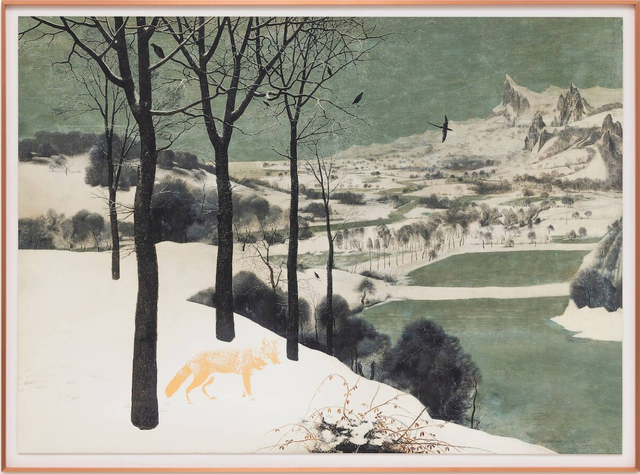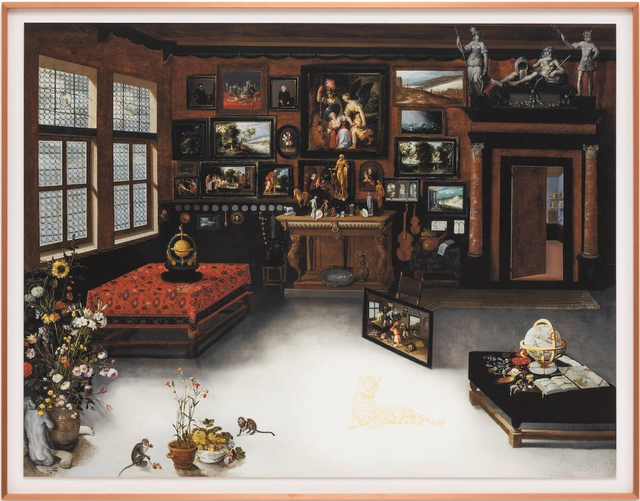Rirkrit Tiravanija
Rirkrit Tiravanija is a globally renowned contemporary artist known for his innovative and thought-provoking works that challenge conventional notions of art and spectatorship.
Biography of Rirkrit Tiravanija
Rirkrit Tiravanija was born in 1961 in Buenos Aires, Argentina, and now lives and works in New York City, USA, Berlin, Germany, and Chiang Mai, Thailand.
Following periods of residence in Thailand and Ethiopia, he initially studied history at Carleton University. He subsequently embarked on a journey of artistic education, attending the Ontario College of Art in Toronto (1980–84), the Banff Center School of Fine Arts (1984), the School of the Art Institute of Chicago (1984–86), and the Whitney Independent Studies Program in New York (1985–86). In 1982, he relocated to Manhattan.
In 2017, Tiravanija was selected for Creative Time's "Pledges of Allegiance" public art project, creating one of the 16 flags displayed across the U.S. These flags aimed to demonstrate art's capacity to inspire political change.
Tiravanija's flag, "Untitled 2017 (Fear Eats The Soul) (White Flag)," unfurled atop the Arts Council of Princeton's Paul Robeson Center for the Arts, references the work of German filmmaker Rainer Werner Fassbinder, specifically "Ali: Fear Eats the Soul." This film delves into themes of xenophobia and racism.
Today, Tiravanija is a Professor of Professional Practice in Visual Arts at Columbia University's Faculty of the Arts.
Achievements and recognitions
Tiravanija's artistic achievements have earned him numerous accolades and grants, including the Gordon Matta Clark Foundation Award, the Louis Comfort Tiffany Foundation Biennial Competition Award (1993), the National Endowment for the Arts Visual Artist Fellowship (1994), the prestigious Benesse Award from the Naoshima Contemporary Art Museum in Japan, and the esteemed Lucelia Artist Award presented by the Smithsonian American Art Museum (2003). In 2004, the Solomon R. Guggenheim Museum in New York awarded Tiravanija the prestigious Hugo Boss Prize in recognition of his work.
Tiravanija's artistic creations have been extensively showcased in global museums and galleries, with notable solo exhibitions at the Drawing Center, New York (2008); Musée d'Art Moderne de la Ville de Paris (2005); Serpentine Gallery, London (2005); Galerie für Zeitgenössische Kunst, Leipzig (2003); Secession, Vienna (2002); Portikus, Frankfurt (2001); Center for Contemporary Art, Kitakyushu, Japan (2000); Los Angeles County Museum of Art (1999); and the Museum of Modern Art, New York (1997).
Rirkrit Tiravanija's Art Style
In one of his most renowned series, starting with "pad thai" (1990) at the Paula Allen Gallery in New York, he departed from traditional art objects and instead involved himself in the preparation and serving of food to exhibition attendees. In 1995, he presented a similar untitled creation at the Carnegie International exhibition held at the Carnegie Museum of Art, providing written instructions detailing the process of making Southeast Asian green curry, which was then prepared for gallery visitors.
Since the early 1990s, Tiravanija has released various editions that include items like backpacks, culinary utensils, and maps, seamlessly integrating them into his creative process. These ordinary objects, once used for culinary or outdoor purposes, have evolved into poignant reminders of the artist's past endeavors. In his work titled "Untitled 2008–2011 (The Map of the Land of Feeling)," Tiravanija masterfully weaves a visual narrative tracing his life and artistic journey.
In 1997, Tiravanija explored modernist architecture by creating an installation titled "Untitled: 1997 (Glass House)" in the sculpture garden of the Museum of Modern Art. This installation featured a scaled-down version of Philip Johnson's iconic Glass House (1949), designed on a child-size scale.
In 2008, Tiravanija released the film "Chew the Fat," featuring cinematic portrayals of twelve artists personally selected by Tiravanija. These artists, belonging to the same generational cohort as Tiravanija, are the focal point of the film's narrative.
Following "Chew the Fat," Tiravanija ventured into his second feature film, "Lung Neaw Visits His Neighbours," which premiered in 2011. This documentary was showcased in the Orizzonti section of the 68th Venice International Film Festival. The film provides an intimate glimpse into the life of Lung Neaw, a retired farmer residing in a serene village nestled in Chiang Mai, far removed from the turbulent political upheavals engulfing Bangkok. As societal calls for equality, opportunity, and democracy resound loudly, the documentary highlights Lung Neaw's existence, marked by his profound empathy toward his environment and the inhabitants of his village.
Years:
Born in 1961
Country:
Argentina, Buenos Aires
Gallery:

